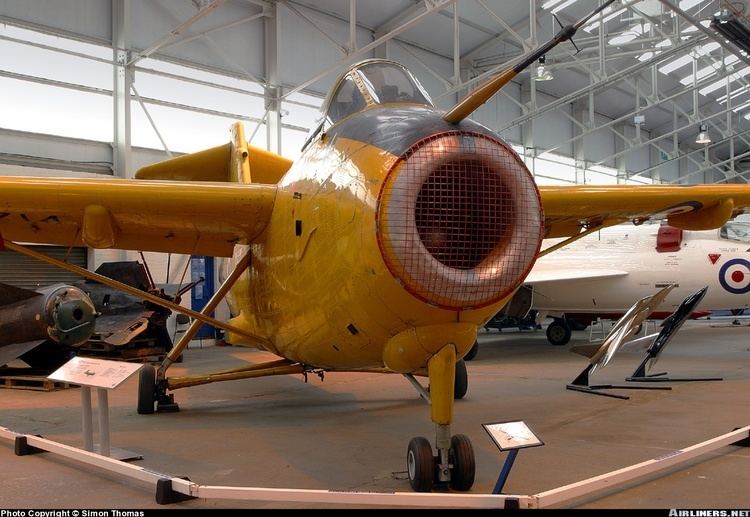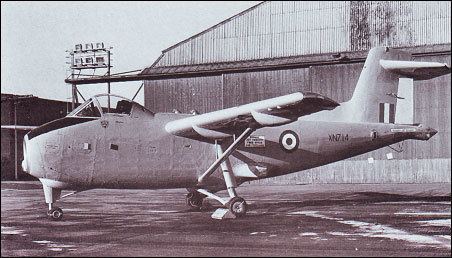Wingspan 14 m Engine type Bristol Siddeley Orpheus | Length 15 m First flight March 26, 1963 | |
The Hunting H.126 was a British experimental aircraft designed and built by Hunting Aircraft in order to test the concept of blown flaps, or as they were known in Britain, "jet flaps". Only one aircraft was built, being flown in a series of one hundred test flights at the Royal Aircraft Establishment's Aerodynamics Flight at RAE Bedford. It was then sent to the United States for wind tunnel testing by NASA, and eventually made its way to the museum at RAF Cosford.
Contents

Design and development

The H.126 was built to fulfil Ministry of Aviation specification ER.189D for full-scale investigation of the "jet-flap principle". The principle of the jet flap had been proposed and patented in 1952 by the National Gas Turbine Establishment and thereafter investigated by the NGTE and the Royal Aircraft Establishment.

The aircraft was designed purely for test purposes, and thus lacked features such as retractable landing gear. The shoulder-level wing featured a set of struts, not for support but in order to provide piping for the compressed air used in the blown flaps. The rear control surfaces consisted of a fairly small triangular T-tail, similar to the one on the Gloster Javelin. The fuselage was fairly simple, similar to the Hunting Jet Provost in layout, but with a smaller cockpit for a single pilot. The air intake for the single Bristol Siddeley Orpheus engine was located in the extreme nose. The jet flap system consisted of a series of sixteen nozzles arranged along the trailing edge of the wing, which were fed about half of the engine's hot exhaust gases. A smaller amount, about 10%, was also fed into small nozzles on the wing tips to provide control thrust at low speeds. A similar system was later used on the Hawker Siddeley Harrier for similar reasons. This left little power for forward thrust, and the aircraft was limited to low speeds, but the takeoff speed was a mere 32 mph (52 km/h), a speed most light aircraft would have trouble matching.

Hunting was awarded the contract in 1959 to build two aircraft. The first of these, serial number XN714, flew on 26 March 1963, painted overall yellow with a matt black anti-glare area on the nose in front of the cockpit. The second aircraft XN719 was never completed. Test flights were carried out between 1963 and 1967. In 1969 it was shipped to NASA and was returned in May 1970, staying in storage until September 1972 when it was struck from the RAF records.
Operators
Specifications (H.126)
Data from Jane's
General characteristics

Performance

